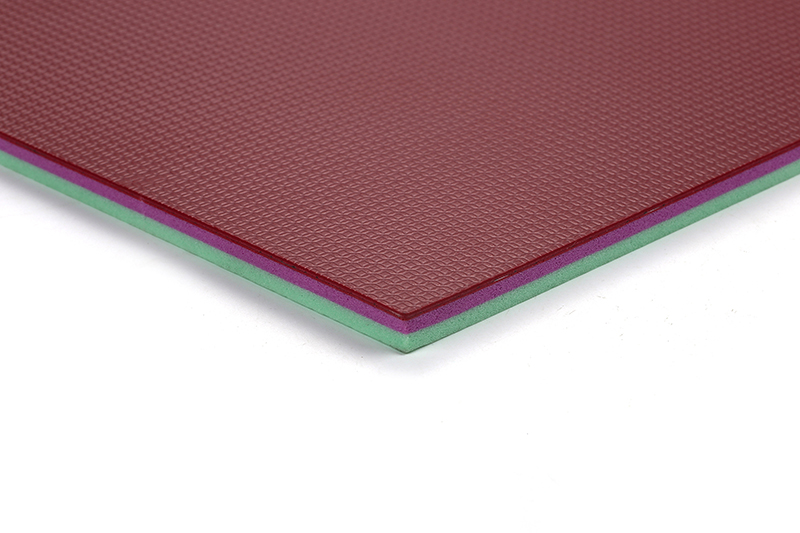10 月 . 10, 2024 16:55 Back to list
indoor sports flooring
Indoor Sports Flooring Choosing the Right Surface for Performance and Safety
When it comes to indoor sports facilities, the choice of flooring is crucial for ensuring optimal performance, safety, and durability. The right indoor sports flooring can significantly enhance the overall experience for athletes, coaches, and spectators alike. With various options available, it's essential to understand the advantages and disadvantages of different types of surfaces to make an informed decision tailored to specific sports and activities.
Types of Indoor Sports Flooring
1. Wood Flooring Hardwood flooring is a classic choice for indoor sports facilities, particularly for basketball, volleyball, and gymnastics. Wood surfaces provide excellent shock absorption, resilience, and traction, allowing athletes to perform at their best while minimizing the risk of injuries. The aesthetic appeal of natural wood is an added bonus, giving sports venues a professional and polished look. However, wood flooring requires regular maintenance to prevent water damage and wear over time.
2. Vinyl Flooring Vinyl sports flooring has gained popularity due to its versatility and affordability. It is available in a variety of designs and colors, making it visually appealing while also providing excellent durability. Vinyl surfaces are resistant to moisture and easy to clean, making them a practical choice for multipurpose facilities. They also offer good traction and shock absorption, which is important for sports like badminton and gymnastics. On the downside, vinyl can become slippery when wet, and its lifespan may be shorter compared to other materials.
3. Rubber Flooring Rubber is another excellent option for indoor sports environments, particularly for weightlifting, aerobics, and general workout areas. Rubber flooring provides superior impact resistance, which is essential for high-impact sports and activities. It helps reduce noise levels and provides a comfortable surface for athletes during training sessions. Additionally, rubber is resistant to moisture and easy to maintain. However, it may not provide the same level of traction as wood or vinyl, which could affect performance in sports that require quick movements.
4. Modular Flooring Interlocking modular flooring tiles have become increasingly popular for their ease of installation and customization options. These tiles can be made from various materials, including rubber and foam, and can be used for a range of sports activities. Modular flooring allows for quick replacements in case of damage, making it a cost-effective solution for long-term use. However, the movement of the tiles can lead to uneven surfaces if not installed properly, which might compromise safety.
Key Considerations for Choosing Indoor Sports Flooring
indoor sports flooring

When selecting the ideal flooring for indoor sports, several factors come into play
- Safety The flooring material should provide adequate traction to prevent slips and falls while also offering cushioning to reduce the impact on joints during high-intensity activities.
- Durability Indoor sports flooring should withstand heavy foot traffic, impacts, and occasional spills. Consider materials that are resistant to wear, tear, and moisture.
- Maintenance Depending on the material, some flooring options may require more upkeep than others. Understanding the maintenance needs and costs is crucial for long-term planning.
- Versatility If the facility is intended for various sports and activities, consider a flooring option that can accommodate different types of use without compromising performance.
- Budget While investing in high-quality flooring can improve safety and performance, it's essential to balance these benefits against budget constraints.
Conclusion
Choosing the right indoor sports flooring is vital for creating a safe and effective environment for athletes. Whether opting for traditional wood, versatile vinyl, durable rubber, or modular tiles, decision-makers must carefully consider the specific needs of their facility and its users. By doing so, they can ensure that their indoor sports space fosters not only athletic performance but also overall enjoyment and safety for everyone involved. Ultimately, well-chosen flooring can serve as the foundation for countless successful sports experiences.
-
Custom Pickleball Court Solutions Convert Tennis & Indoor Builds
NewsMay.30,2025
-
Outdoor Pickleball Court Costs Build & Install Pricing Guide
NewsMay.30,2025
-
Premium Pickleball Sports Courts Custom Design & Installation
NewsMay.30,2025
-
Indoor Pickleball Courts Tennis Court Conversion & Custom Builds Tempe
NewsMay.29,2025
-
Professional Pickleball Court Installation & Tennis Court Conversions
NewsMay.29,2025
-
Grey Synthetic surface-rubber prefabricated track
NewsMar.07,2025

